Student art unveiled at Worthing railway station Remembrance event
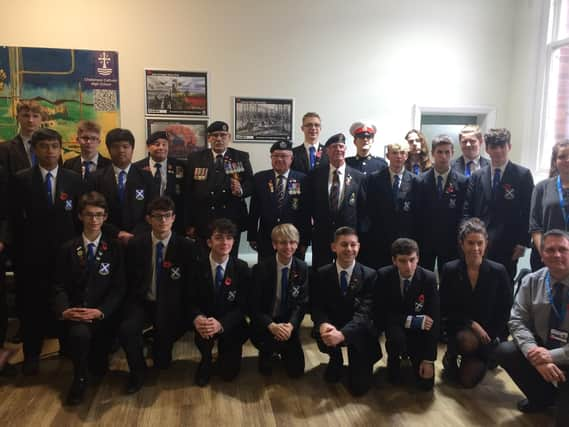

Work by students from St Andrews school in Sackville Road, Worthing, was unveiled in the waiting room at the station during an event attended by students, teachers, veterans, the Mayor and Mayoress and the town crier.
Louise Welcome, headteacher at St Andrews, said: "Part of the reason it is so pertinent that we are here at the station is that many young men who were St Andrews boys and Worthing boys left to go to war and some of them gave their lives from platform two here."
Advertisement
Hide AdAdvertisement
Hide AdCaroline Woodward, head of arts, introduced a student multimedia artwork and said: "War tears apart communities but we can help bring them back together."
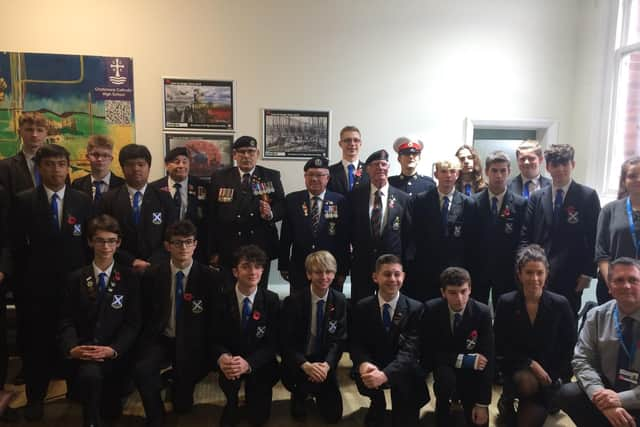

Students read poems as a commemorative film created by students was projected onto the waiting room wall.
Ms Woodward said afterwards: "The boys have worked so hard in completing the artwork."
Councillor Paul Baker, the mayor of Worthing, said: "It's been an absolute honour to be here today. It really hit home to me the meaning of Remembrance.
Advertisement
Hide AdAdvertisement
Hide Ad"Many of those who died in the war were not much older than the pupils from St Andrews we see here today.
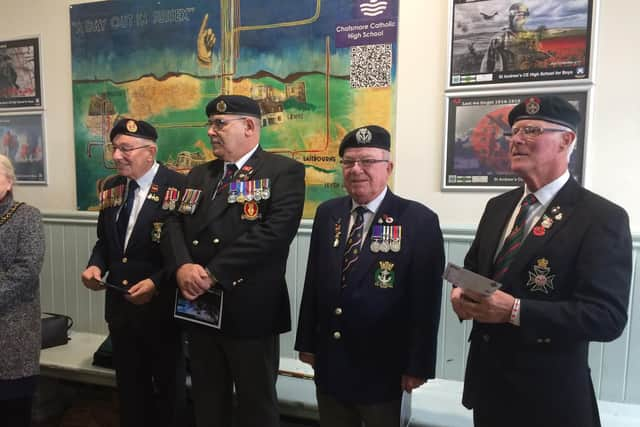

"The artwork produced by these pupils is absolutely fantastic - it is so evocative of the time and so emotional."
He added: "I'm so impressed with the youth of this town.
"I get very tired of people talking about the youth like they are always making trouble.
"It's just not the story. I see the story about the youth of this town being fine upstanding citizens, and the future of Worthing to me is totally safe in the pupils we see here today."
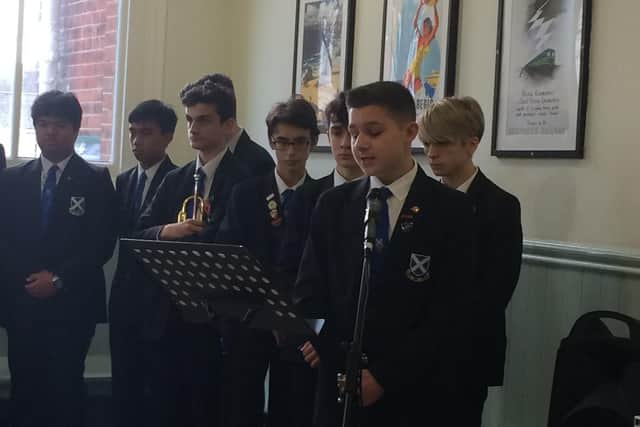

Advertisement
Hide AdAdvertisement
Hide AdA silent silhouette was also unveiled at the station to remember the railway workers who gave their lives in the war.
Tessa Moss, Southern Rail’s Acting Station Manager for Worthing, said: "We want to remember the railway workers from Great Britain and Ireland who served under arms during the First World War, almost 19,000 of whom made the ultimate sacrifice.
"We are also paying tribute to the enormous contribution of the hundreds and thousands of men and women who kept Britain’s rail network moving, delivering vital munitions and supplies to the Western Front.
“At Worthing, we’re thrilled that so many residents – particularly our students – and our fantastic station staff have got involved commemorating the First World War.
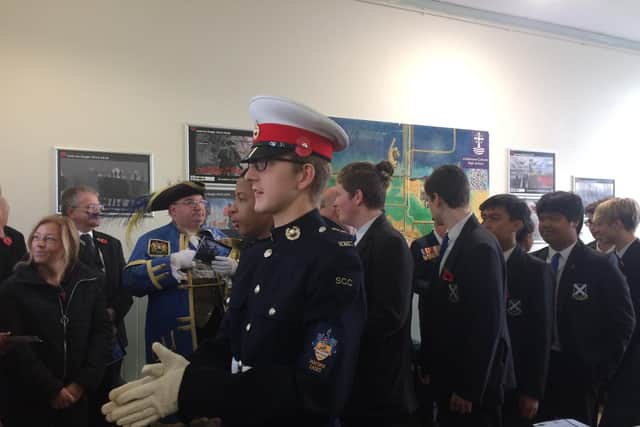

Advertisement
Hide AdAdvertisement
Hide Ad"Alongside our wonderful silent soldier silhouette, some of the local students have created a wonderful piece of art using a combination of 1910 maps of Worthing showing where our soldiers lived and images of the Front line. Our emotive display will stay in place for the rest of November in respect.”
Southern Rail, which was previously known as the London, Brighton and South Coast Railway, played a major part in transporting armies and ammunition to and from the Front during the First World War.
A total of 5,635 railway workers left to join the war, which amounted to 34.6 per cent of those in the company’s service in 1914.
In total, 530 railwaymen fell and 900 were wounded, made prisoners or were reported missing
Advertisement
Hide AdAdvertisement
Hide AdThe rail network was responsible for carrying the bulk of stores and munitions delivered to the British troops on the continent, including nearly seven million tons of goods, including 2.7 million tons of explosives.
A total of 80,742 trains were used for the purpose of the war - if the running had been constant there would have been a train for every half-hour from the day war broke out until the day the Armistice was signed.
A total of 79,407 patients were conveyed on 678 ambulance trains, which run from the outbreak of war to the end of December 1918.